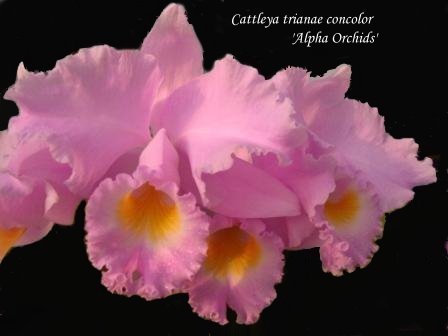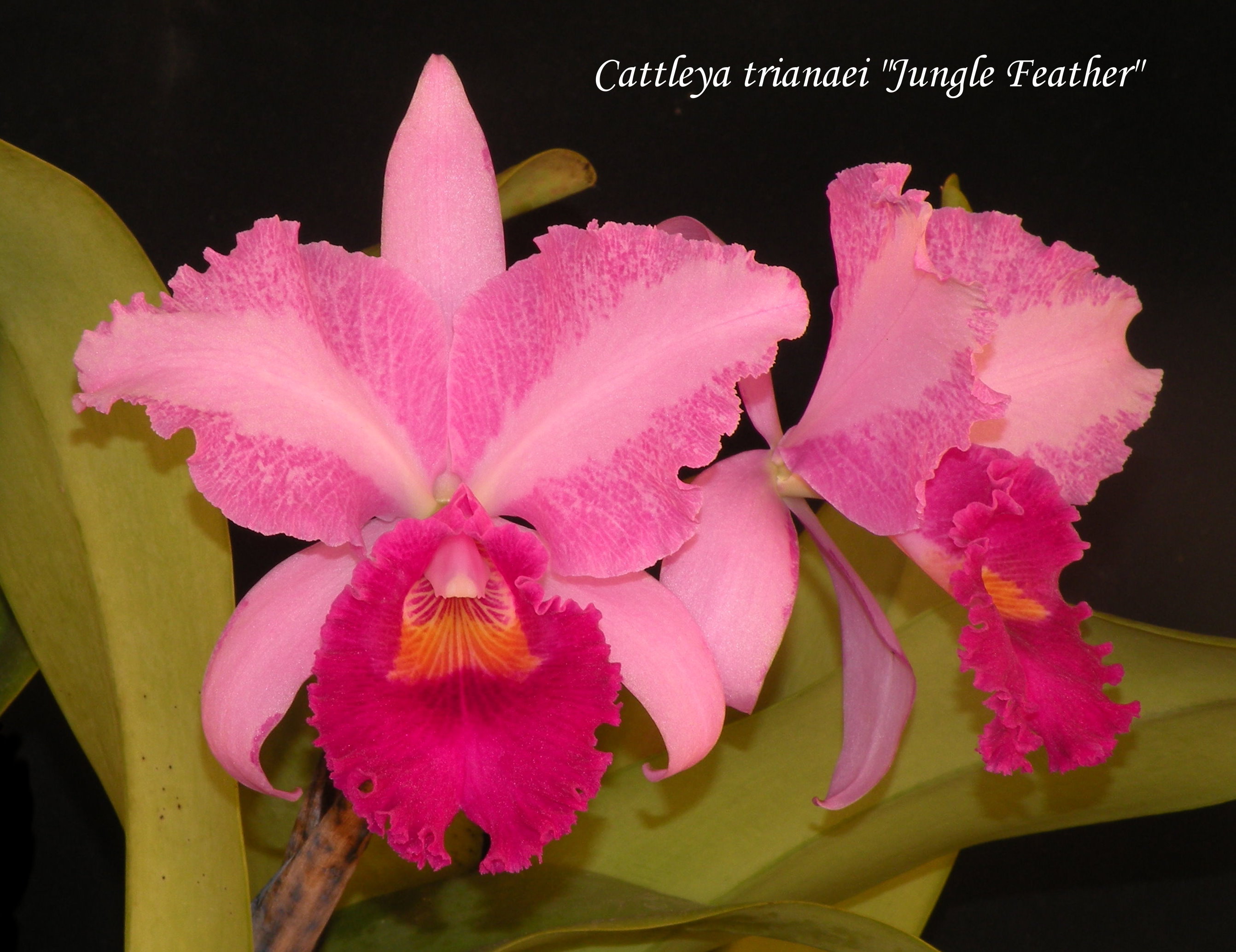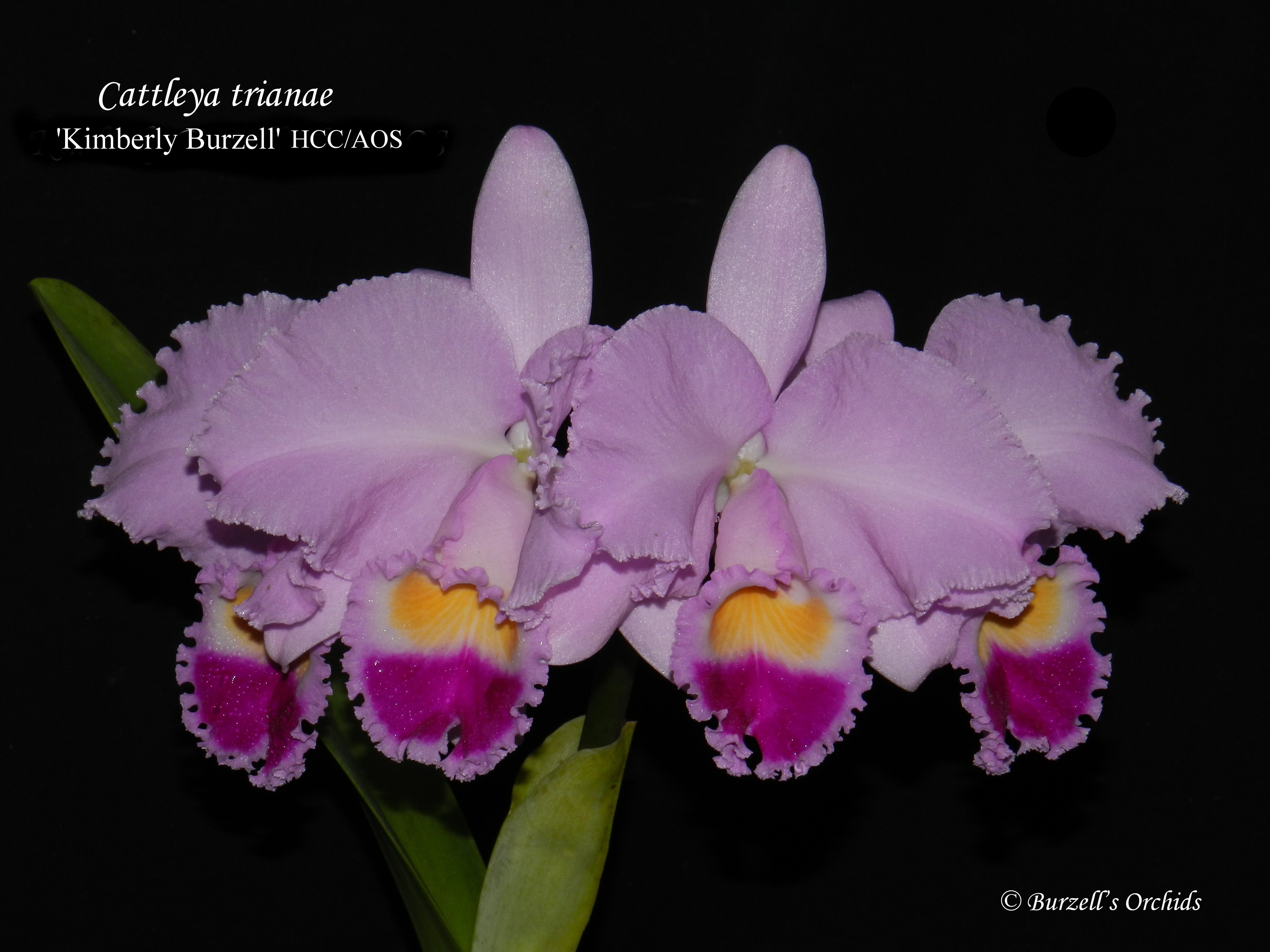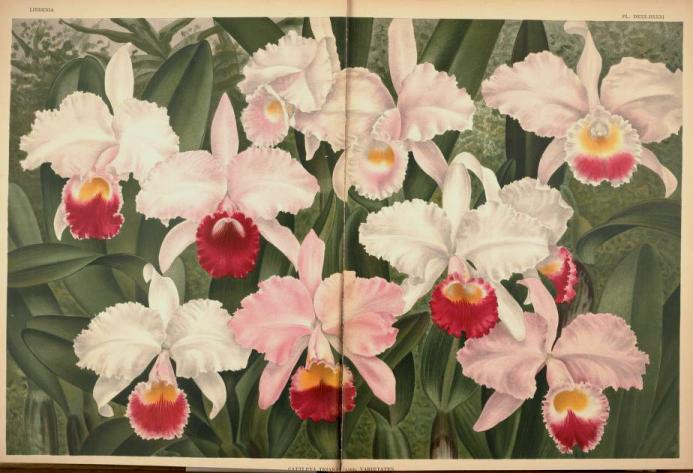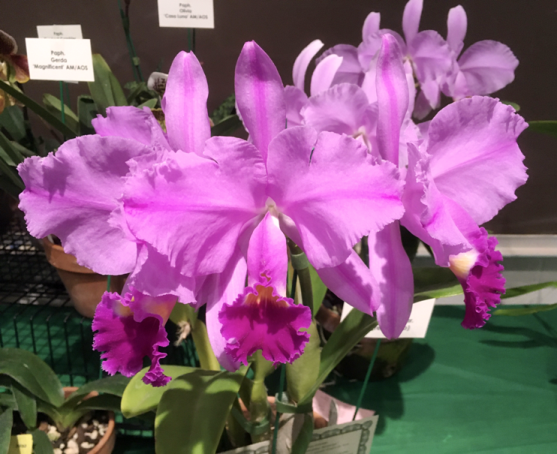
When did you first notice orchids? For many of us, it was the first time we saw a Cattleya flower. It was a very likely a huge lavender thing of unimaginable beauty that seemed too perfect to be real. It might have been at a flower show or at a florist shop. It was hard to fathom how any plant could produce such a flower, or even what sort of a plant it could be, or how it could be grown. The existence of Cattleyas made the idea of the Amazon jungle all the more mysterious than it already was.
By the 1950's, in the early years of South Coast Orchid Society, Cattleyas were in demand as cut flowers, mostly for corsages. Enterprising gardeners had figured out how to grow them, mostly "under glass", and some of our members taught themselves how to hybridize them and grow them from seed. There were exciting developments on the horizon: the development of large-flowered yellow, orange, and red Cattleyas was almost within reach. But the big "classic" Cattleyas — glorious new lavenders like Bonanza, huge, frilly whites, at least five generations of line breeding from wild-collected cultivars of C. mossiae, among others — still dominated the show tables.
Today it might seem that the Cattleya world has moved on to other things. The vogue of "art shades", such a hit in the 1970's, seems to have passed, with its parade of indescribable colors, some of which didn't seem to belong together in a single flower. A series of smaller and smaller Cattleya hybrids has been produced, and we now have many shapes and sizes of plants and flowers to fit our diverse tastes and growing areas. Many of the newer "compact" hybrids are easier to grow and flower.
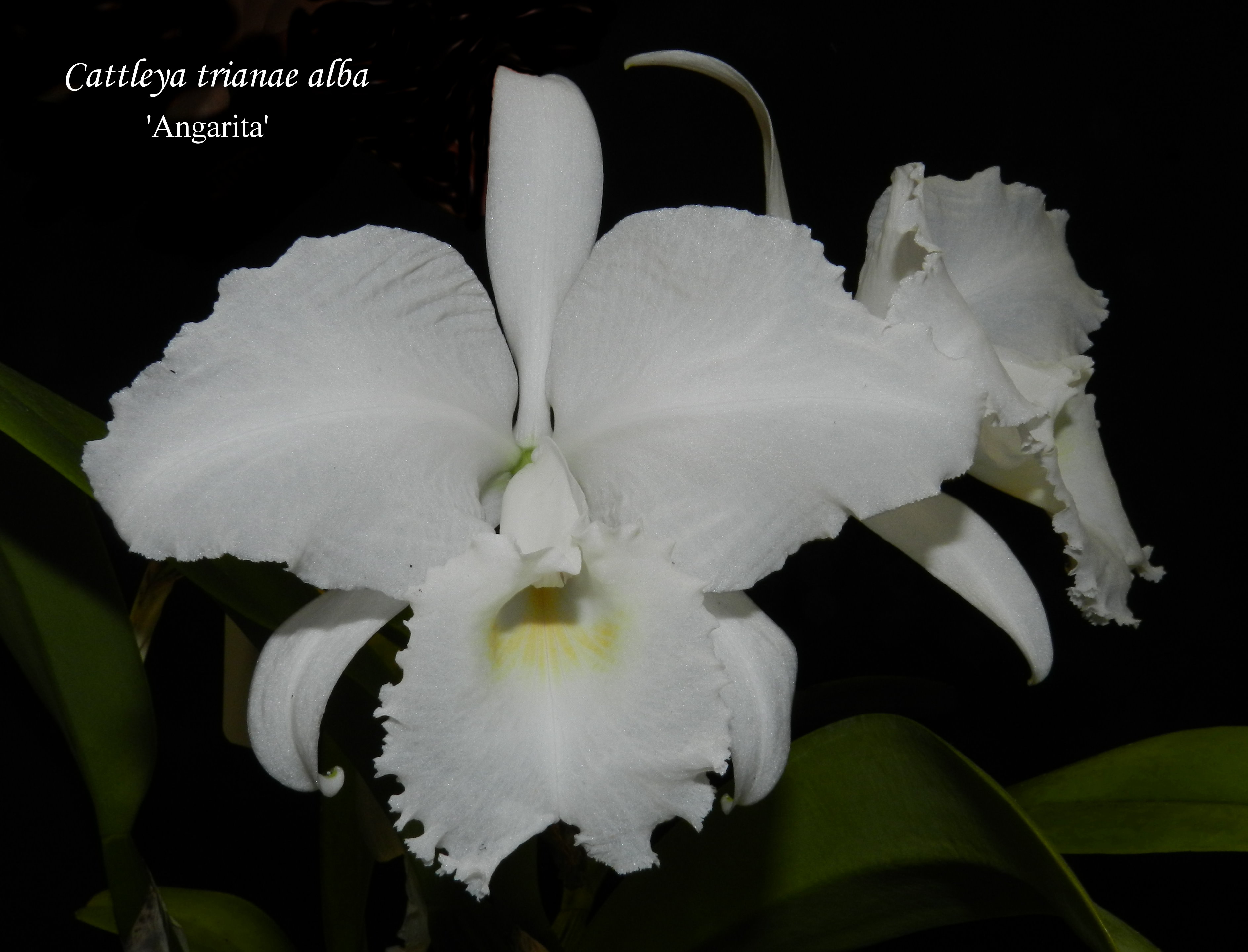
© Burzell's Orchids
Look more closely, however, and you may realize that the "classic" Cattleya flowers haven't gone away. They are as beautiful, as arresting as ever, and many of us still wish we could grow them well. They still have the power to light up a room. A case in point: at the recent Paph Guild meeting at the Huntington Botanical Center in January, 2020, exhibits of Paphs and Phrags lined one wall of the meeting room. At the last minute, our friend Doug Overstreet walked in with a fine specimen of C. trianae from the Huntington's collection that had just won an HCC award during AOS judging downstairs (see the illustration at the top of this web page). The plant ended up in the Huntington's exhibit of Paphs, certainly the safest place for it during the meeting, as there wasn't time for Doug to return it to its home in a distant greenhouse. It was probably the most photographed individual plant at the event! That's what we mean when we say Cattleyas can steal the show! Everybody kept an eye on it to make sure it would get back home ok, even while the Paph and Phrag lectures were going on.
Without apology, therefore, we scheduled a program to reflect on the stunning flowers that led us to the orchid hobby in the first place. Lin Burzell suggested we might appreciate a program on C. trianae. The more we read, the more we liked this idea. Here is a species with so many superior cultivars that there is really little need to "improve" them by hybridizing them with other species, except for the wish to extend their blooming season.

© 2019 Donna Ballard
Linden Burzell, at the 2019 Orchid Digest Speakers' Day, Huntington Botanical Center
Linden Burzell has been growing orchids for nearly sixty years. He began collecting as a young man in Vista, California, buying his first plants from some of the famous Southern California growers of the late 50’s and 60’s.
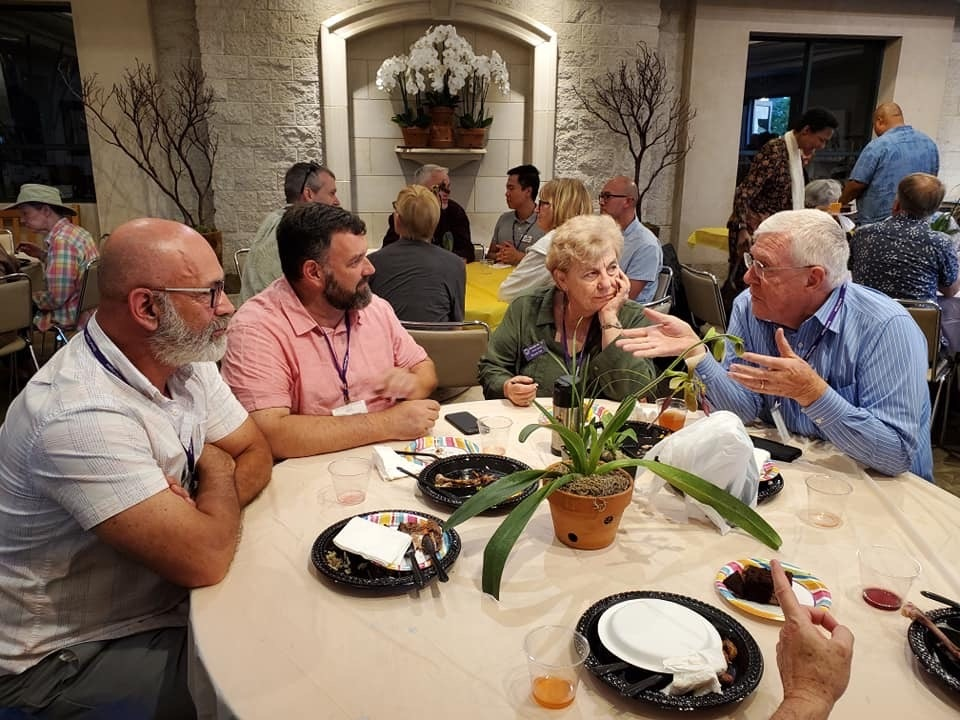
© 2019 Donna Ballard
Who's that behind Lin Burzell at the next table? It's your oblivious web master! Next time we will turn around to be sure we get acquainted with everybody.
After graduating from UCLA, he went on to receive his Ph.D. in Marine Microbiology from the University of Hawaii. Lin travelled for over twenty years throughout much of South East Asia and South America on business, where he was involved in the start-up and operation of a number of large-scale shrimp and fish farms, especially in coastal Ecuador, India, Malaysia and China.
During his thirty years in Hawaii, Lin was active in orchids, and was a member of the Windward Orchid Society, the Hawaii Orchid Society and served on the board of La Hui Okika Species Club and was president of the Lyon Arboretum Association.
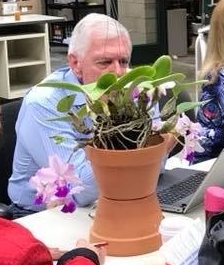
Lin Burzell in the judging room
After re-locating to southern California in 1996, he returned to orchid growing with a vengeance. He now maintains a growing collection of Cattleya species cultivars, which he enjoys breeding, growing, exhibiting and photographing (he took all the flower photos he will show us during his presentation). Lin currently lives in Rancho Bernardo in San Diego with his wife Kimberly and two dogs. Lin is currently an Associate American Orchid Society judge in the Pacific South region.
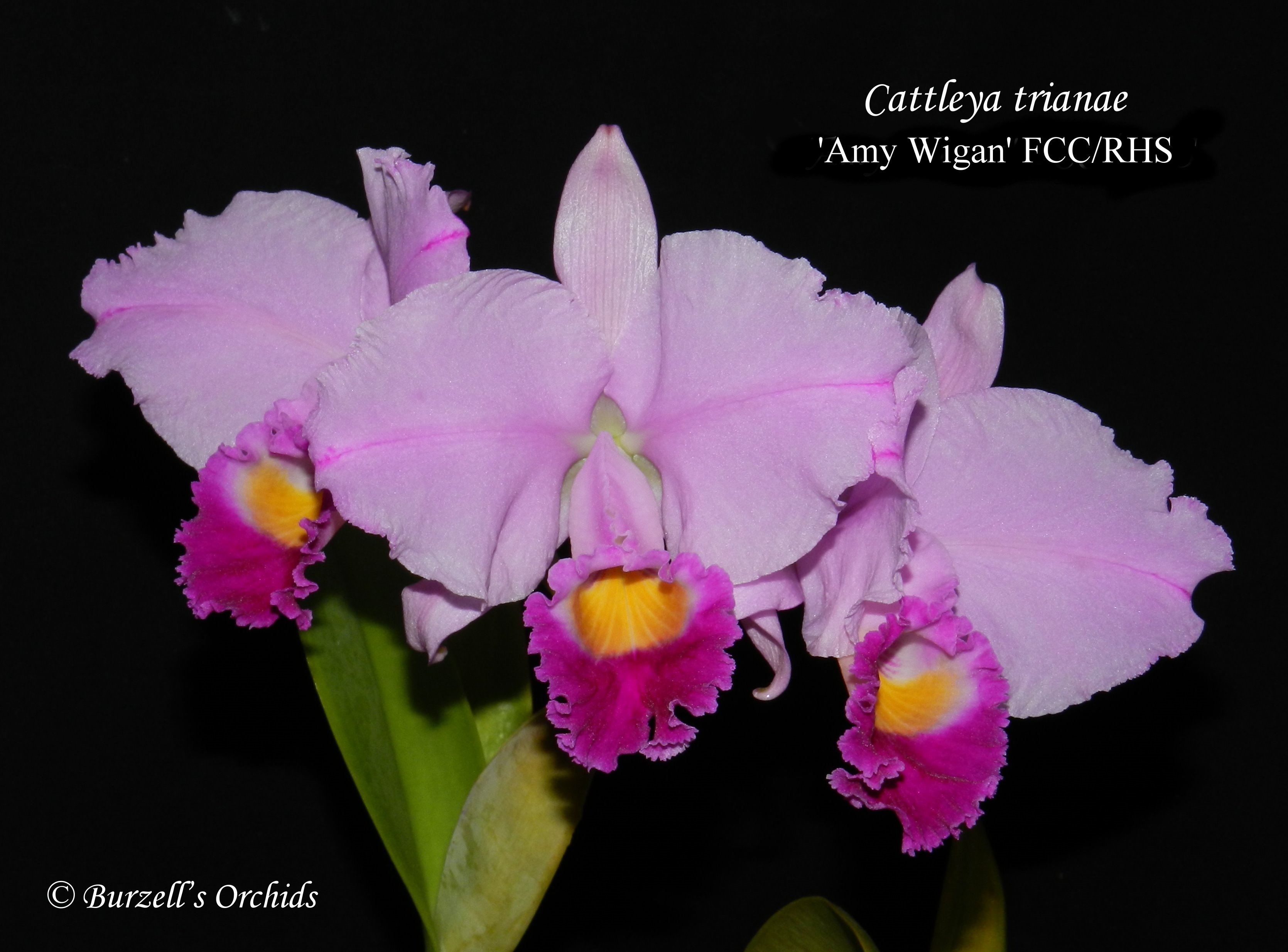
Lin tells us Cattleya trianae is everything an orchid should be: stunningly beautiful; native to a remote and exotic locale; available in a vast array of color varieties; shapely, free flowering, with cultivars that bloom from October to April, hardy and easy to grow. A great beauty in its own right, C. trianae has left a lasting imprint on hundreds of hybrids. In this talk, Lin Burzell will tell the tale of its discovery and natural history, illustrate the tremendous variety of available cultivars, and outline what it takes to grow and flower them successfully.
Making the point that C. trianae is renowned for its many fine varieties:
All © Burzell's Orchids Double plate from Lindenia (1896), assorted varieties of C. trianae that had recently caught the editor's attention. The
pages of Lindenia and other orchid magizines of the period are full of paintings and photographs of this species, as well as enthusiastic text
proclaiming the merits of its many varieties.